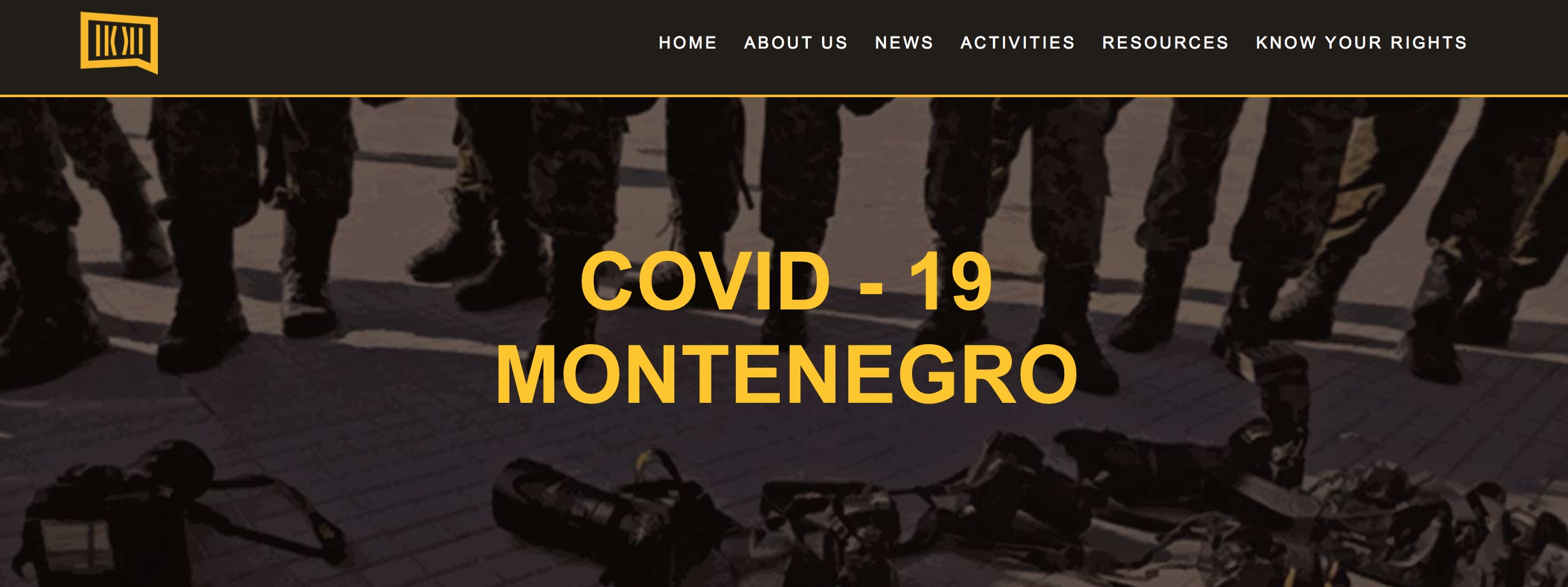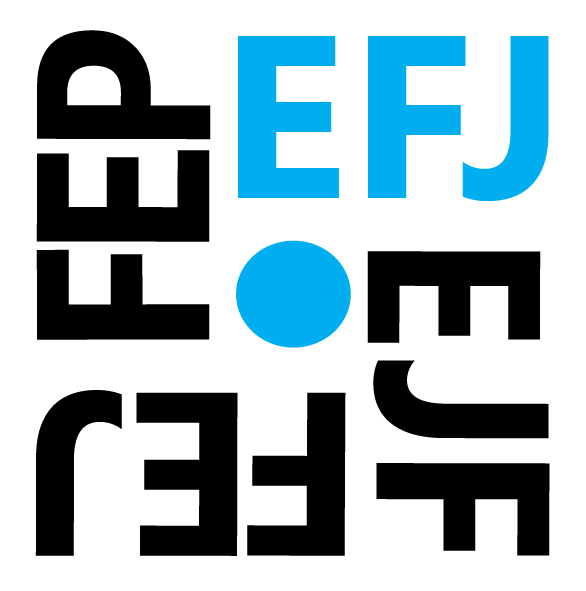Covid-19 epidemic is seemingly easing, however its effects are still very much felt across all fields. Looking back, in a series of interviews SafeJournalists discusses how the pandemic influences media freedoms and journalists, are the authorities using the crisis to curb these freedoms and media owners to cut jobs. Finally, what their associations have done so far to help its members and other journalists now and in what follows. Colleagues from North Macedonia and Bosnia and Herzegovina highlighted the importance of getting information of public interest to citizens and keeping journalists safe in the process. The situation was and is very similar in Montenegro, as described by Marijana Camovic Velickovic, president of Trade Union of Media of Montenegro.
THE STATE OF EMERGENCY
Montenegro government did not declare Covid-19 related state of emergency. Instead, a state of epidemic was declared and the National coordinating body for disease control announced a number of measures, including restriction of movement (working days 7 pm – 5 am), restriction of gathering for more than 2 people in public space, closure of shopping malls and stores, except food stores and pharmacies etc. Journalists are excluded from the restriction of movement. The government announced the end of state of epidemic 28 days after the last case of corona-virus infection (June, 2). Now, only some basic measures, such as the obligation to wear masks in health institutions, care homes and public transport remain in force. This changed again on June, 14thwhen a new case was registered and certain measures such is wearing a mask in closed public place, were reintroduced.
SafeJournalists: The state of epidemic was introduced, including restriction of movement – but not for journalists. However, informing the Montenegrin pubic was not without limitation.
Marijana Camovic Velickovic: Introduced measures limited journalists – live press conferences were replaced by a new format where as journalists could ask questions online, via platform Government introduce, and the answers were broadcasted live. TUMM received several complains from colleagues, who claim that they had asked a question, but it wasn’t posed to the authorities at the conference.
However, that wasn’t the only issue – we also received the complaints, mostly by photo reporters and cameramen who could not access the venues to portray the real situation. For example, they had access to public areas only, they could take pictures of empty streets or queues in front of grocery stores, but were not allowed to access hospitals, laboratories of the Institute of Public Health, quarantines… at the same time, we witnessed that in other countries such access was granted. We did not expect any special treatment, but we did want the public to be fully informed. Such access and footage could have, for example, strengthen citizens’ belief that the health system works, that it has enough equipment, health workers are well protected and know how to do their job. Although it could had turned out to be a good and positive story, it was not allowed for it to be told. Laboratory footage was released by the the Institute of Public Health a day after the end of epidemic was announced.
SF: What other problems did journalist face while trying to report in public interest?
MCV: The initial main concern was about protection measures for journalists – a lot of news teams reported from the field without any protection. Secondly, all sources of information were blocked. The only information came from the Government (National Coordination Body) and the Institute of Public Health, either through conferences journalists could not attend or through their TW and FB profiles. The space for work was very narrow which may explain why in the first few weeks of the crisis, except for what the Government wanted, little else could be published. In that sense, media freedoms were limited because it was impossible to get a broader view of the problem and to address what the Government was doing.
It is important o highlight that, although the government persistently refused to declare the state of emergency, numerous civil liberties were significantly suspended. As time went by, journalists started asking questions and talk to competent interlocutors who argued that the introduced measures were illegal and unconstitutional.
SF: At the beginning of March TUMM joined the European Federation of Journalists plea which urges politicians and media to report responsibly on Covid-19. Not much longer some ethical boundaries were breached.
MCV: Indeed, we had concerns related to ethical aspects of reporting about pandemic. Soon after the mentioned initiative with EFJ, the Government published the details of citizens in self-isolation and quarantine. It was the Government’s responsibility to keep this data secret, but when it published the names and addresses of these citizens, the number of media reported them without protecting their identity. The second time, a civil servant shared the list of infected citizens of Podgorica public and media reported it, despite obvious ethical implications.
SF: Let’s go back to the first concern of journalists – lack of protective gear for journalists reporting from the ground. What has TUMM done to address this issue that put its members and other media professionals at risk for just doing their job?
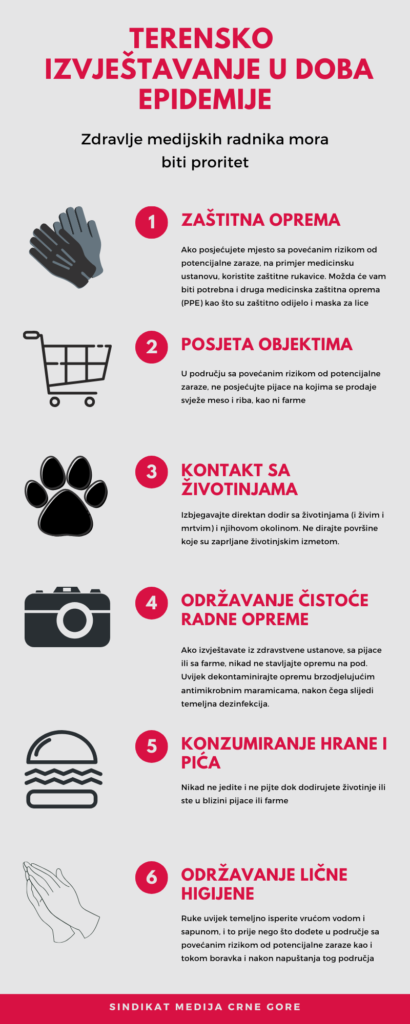
MCV: Since the corona virus epidemic is something that we, as everyone else, encountered for the first time, we put additional effort on proactive approach aimed at increasing the safety of media employees through simple advice but in a way that doesn’t affect the smooth operation of the media and broadcasting. To tackle the problem from inside of the profession, Trade Union of Media of Montenegro produced recommendations for the editors and managers in media on how to provide protection for media workers. We also prepared the guidelines for journalists for safe reporting from the outside and we posted all of the mentioned on social networks, sponsored them and in an attempt to reach as many media employees as possible, editors and media owners.
On March, 18 Trade Union of Media of Montenegro issued the public call urging health authorities and employers to ensure that media workers have protection equipment. After that appeal, and at the moment when protective masks and gloves were impossible to find in free sale, one of the first measures of the Government was to provide the newsrooms with protective gear. However, I’ll be free to say that we expected more, including protective suits, because we had hoped that the news crews would be able to report in more detail than they were allowed to at the time. But that didn’t happen.
SF: Many of the countries of the region, like Serbia and BiH, faced serious limitations of media freedoms and actions taken against journalists, including arrests. Where journalists in Montenegro faced with similar limitations?
MCV: No, not in that – let’s say – classical manner. Denying access to information and it selective communication to the public is the key problem, including lack of transparency in making very important decisions concerning civil liberties and, in the later period, economic measures that were unanimously adopted.
But, on the other hand, it is hard not to notice that media scene in Montenegro is uniform. All media started to look the same and it is difficult to find views critical of the Governments’ policies. The reason behind this may be the generous help Government had promised to media to deal with the economic consequences of pandemic. One of the first measures adopted by the Government was direct financial assistance to the media. In addition to funds, media received various other benefits, such as exemption from paying broadcasting licenses, paying royalties when broadcasting music, etc. All these expenses were taken over by the Government which also provided media with favourable loans with minimal interest through the state Investment Development Fund. Through subsequent packages of economic measures that applied to the entire economy that was estimated to be directly or indirectly affected, the media again received incentives such as direct cash compensation for employee wages. We estimate that in the first wave alone, the media received around half a million euros in various ways.
It is possible and, in my opinion, very likely that uniformity I mentioned – in reporting on the corona-virus and the state’s response to it, as well as lack of any other topic in the media – is a counter favour by the media.
SF: These measures are extraordinary, since the law proscribes that the state aid can be allocated once in 10 years.
MCV: What we have now is that media are practically 100% dependent of the state budget which is not only bad, but also illegal. State aid can be allocated legally only once in 10 years. In Montenegro, even without Covid-19 it is being done practically every year. This is why what matters is the way the money is spent and who profited from the state of the epidemic. Will media owners continue to keep employees to a minimum wages and in a state of constant fear under the pretext of Covid-19.
SF: As a trade union, TUMM offers free legal aid to its members and advocates for policies that can ensure labour rights are respected. What was the experience in the last couple of months?
MCV: The basic and most important right that media employees receive when they become our members is free legal aid. Originally, our service covered only labour-related issues, but over time it became clear that, although TUMM is a trade union we have to expand our services. As we grew, we forged partnerships with more experts and lawyers that offer legal aid to our members when it comes to cases of attacks on journalists and their endangering their safety.
During the epidemic, one part of media employees had their workload reduce or had worked from home. The other part was quite exposed and we put effort on their protection. They sought advice regarding application of the Government measures including, for example, the right of one parent to stay home with kids younger than 11 since schools and kindergartens were closed. A number of employers wanted to record such absence as annual leave, so we intervened there. Problems with labour laws were not specifically related to media sector, but to abuse of labour rights in general.
One of TUMM appeals to the Government is to impose a veto financial and similar assistance to the media to that dismissed its staff in 2020. So far, based on the reports of our members, we haven’t’ had layoffs justified by Covid-19 like in some other countries. The Public Service announced that, as one of its austerity measures, it would cancel part-time associates contacts. By nature of their agreement, these employees, unfortunately, have an extremely insecure job.
SF: As Covid-19 started declining, Montenegro was hit by a wave of protests related to newly adopted Law on freedom of religion. Some citizens were protesting despite the health concerns and measures. Velisa Kadic, a reporter for Serbian daily Vecernje novosti, was detained and pepper-sprayed despite showing press cards.
MCV: One of the measures that is still in power is a ban on public gatherings – at this point, no more than 200 persons can gather on the same place. The measure was violated drastically in mid-May when a large number of worshipers gathered in Niksic. A conflict with the police followed – Kadic was reporting about it. The police arrested him and his eyes were pepper sprayed, despite clearly stating that he is a journalist. Kadic was detained for an hour and then released with an apology.
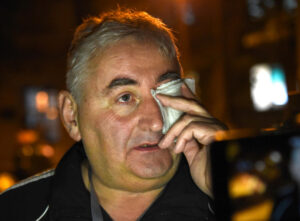
We reacted and immediately offered Kadic legal and other necessary assistance. With our partners from the region, through SafeJournalists network we condemned this incident and requested accountability. TUMM insisted that the case must be resolved and now it is being investigated by the Council for Citizens’ Control of the Police’s Performance. There is a significant discrepancy between Kadic and the statements of the police officers who took part in his arrest. We hope that the Council will get a real picture of what actually happened and draw the appropriate conclusions. We have lodged a complaint with the Council and are now following the case.
This is not the first time that the Montenegro police throws teargas at journalists and doesn’t respect the Council’s recommendation on treatment of journalists during mass gatherings and riots.
SF: There have been a couple of successful efforts in the last months, including indictment against the person who threatened Dan journalist Natalija Mrdak, identification of the person who sent hate messages to Radio Dux or detention of the person suspected of setting fire to the Vijesti vehicle. Are you satisfied with these actions of the authorities? Were there any new moments in the case of, for example, setting Vijesti vehicle on fire in 2011 that influenced the authorities to react or is it just a coincidence?
MCV: Unfortunately, threats and insults to journalists via social networks are not uncommon but in Montenegro the police reacted quickly, the perpetrators were identified and are being prosecuted – that was the case in the last two incidents and that is good.
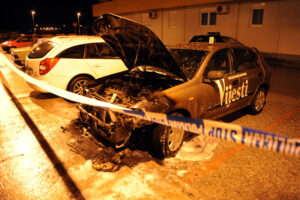
On the other hand, the burning of Vijesti vehicle is among the most serious cases of attacks on the property of media that remained unsolved.
Setting Vijesti vehicles on fire happened over a period of time, it wasn’t only one case. The police and the prosecution had one unsuccessful trial attempt. The arrest of Stanisic and his indictment is news that certainly deserves attention. However, Stanisic was released from prison because the judge found no grounds for keeping him in. We will see how this will develop – based on the information we have, the prosecutor still works on this case. What worries me is the high probability, showcased by previous experience with similar developments in other cases, that nothing will come out of it.
SF: In general, there is a strong argument for complete withdrawal of the state from media or, at least, keeping the state out of editorial policies. How do you comment a decision to establish a local radio television in Podgorica?
MCV: TUMM is generally against the establishing of new media with citizens’ money, primarily because it was proved be disastrous for almost all media established in this way. Local public broadcasters exist in 14 Montenegrin municipalities and only a few are currently not in years or months long financial crisis. Employees of these media don’t receive salaries, they are being blackmailed by their founders (municipalities) who can’t accept that they simply do not have the right to engage in editorial policy, despite financing them. There is no reason to be optimistic when it comes to the announcement from Podgorica and this option has been announced before. I am afraid, due to the experience from other cities, that it will be a media that serves local authorities for promotion and that there will not be much space for independent and objective informing of citizens about local topics.
SF: Reporters Without Borders (RSF) issued its 2020 report. In a statement for safejournalists.net, you mentioned that, although Montenegro has the lowest rank in the region, certain problems that escalating in the region, mostly in Serbia, are decreasing in Montenegro. Can you look again at the RSF report, tell us how it was received by the media community and by the state?
MCV: In polarized Montenegro, everything is received in the same way: the governing structures challenge the credibility of RSF report, and the opposition, the NGO sector and the like have found confirmation of their views in it.
It is true that three journalists have been arrested in Montenegro since the beginning of this year, and one has been detained. This has never happened before. All major unsolved cases of attacks on journalists and the media remain unresolved. The case of the murder of the editor-in-chief of the daily Dan Dusko Jovanovic is also still unsolved, and a few months ago we even heard from the director of police that crucial mistakes were made on the night of the murder due to the fatigue of the prosecutor on duty that night. These are drastic trends that essentially do not allow Montenegro to make progress in any measurement of the degree of media freedom.
I don’t know how RSF gets the data and how it classifies it, but I know that the level of media freedom in Serbia is drastically deteriorating and I don’t know why there is such a difference in the ranking of these two countries.
SF: A few weeks later, a report by Freedom House Nations in Transition was published. In it freedom of expression in Montenegro was marked 3.25 out of a possible 7. Do you have a comment on these findings and reactions to it?
MCV: In Nation in Transition report the relationship between the government and their opponents was identical according to RSF report. The difference is that Freedom House also dealt with other aspects of Montenegrin society, and a setback was noted, so it seems to me that it has attracted more attention.
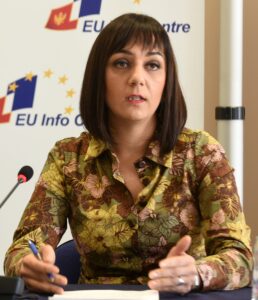
Marijana Camovic Velickovic is a lawyer by education, but she has been working in journalism for almost 20 years. She is the president of the Trade Union of Media of Montenegro (TUMM), the largest organisation of its kind in Montenegro. Since its establishment in 2013 TUMM gathered half of the employees in the Montenegrin media.
Marijana is the author and co-author of several researches and analysis that explore working conditions in the Montenegrin media, the rights of media employees, and media freedom in general.
Marijana is a member, in her second term, of the Steering Committee of the European Federation of Journalists, as well as the Executive Board of the Union of Free Trade Unions of Montenegro and the Commission for Monitoring the Actions of Threats and Violence against Journalists, Murders of Journalists and Attacks on Media Property.


